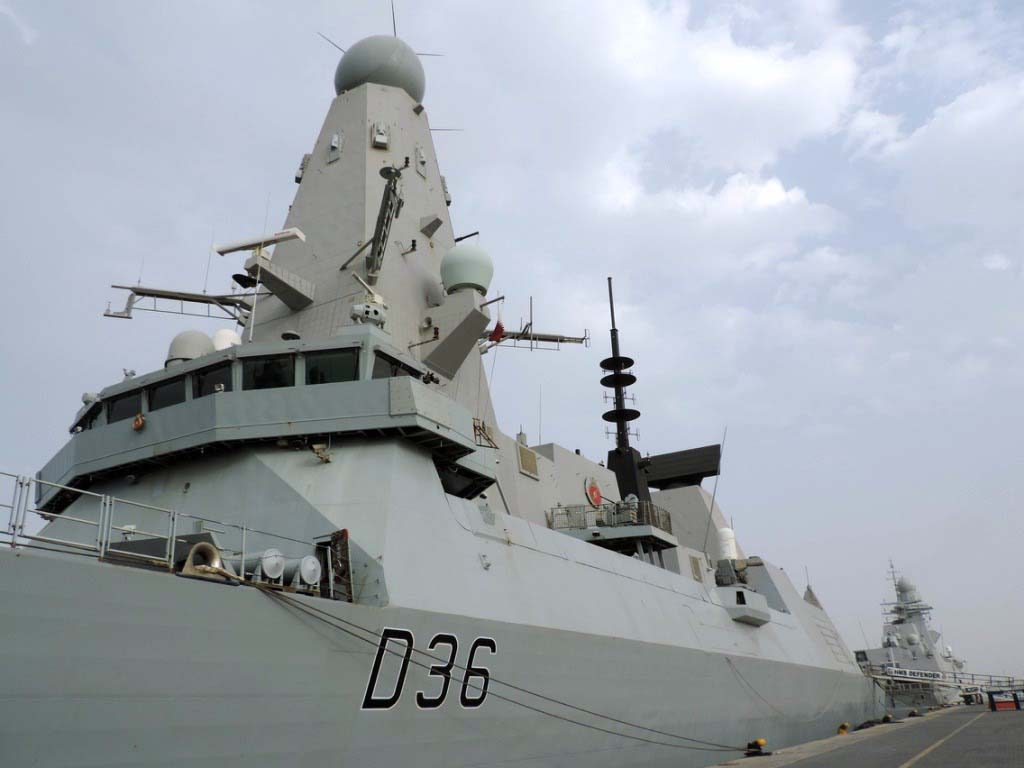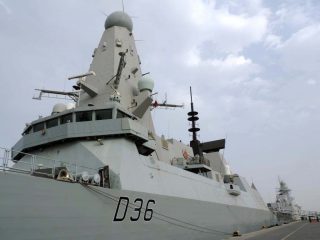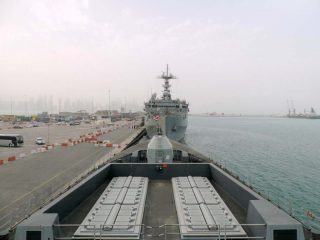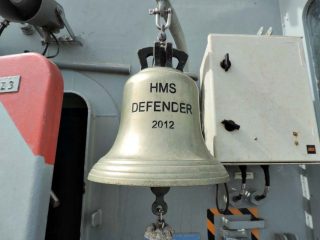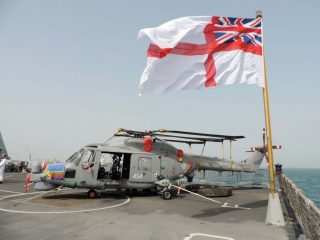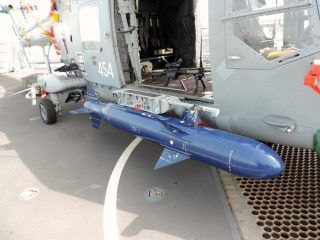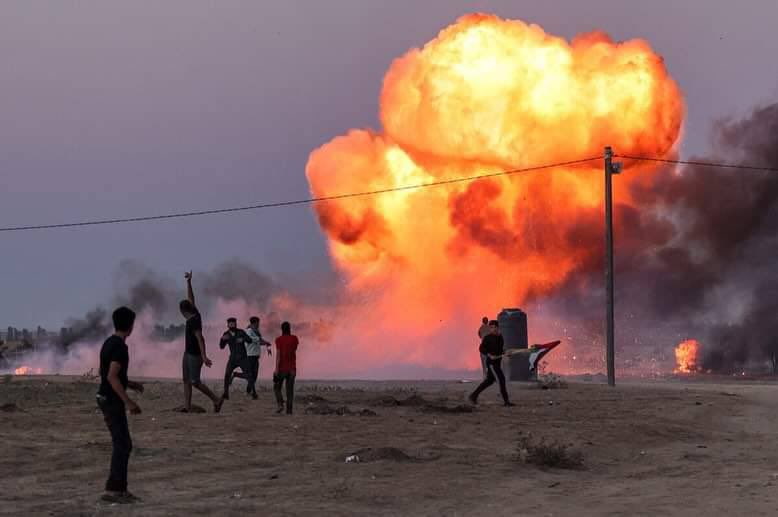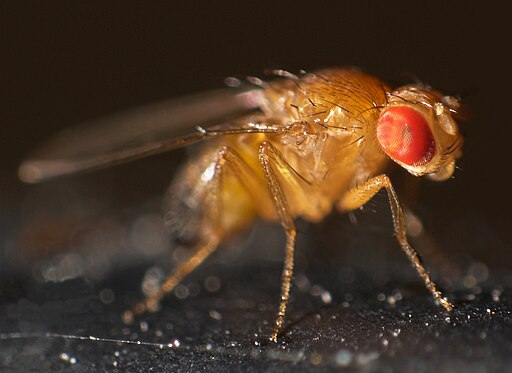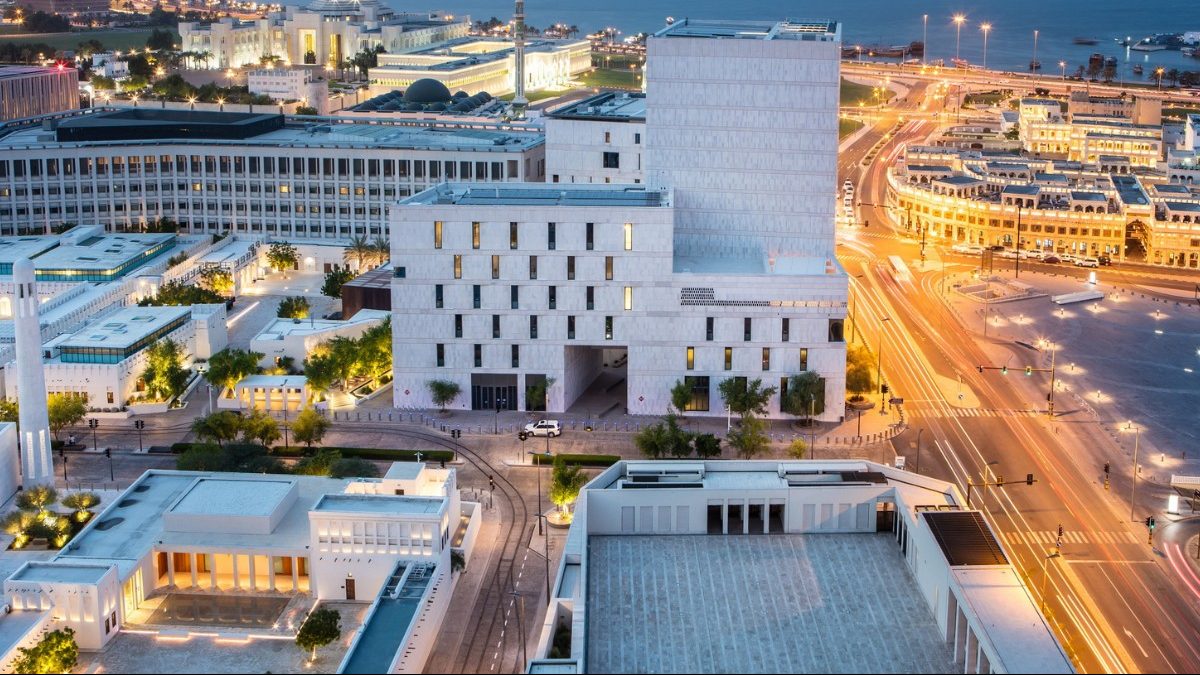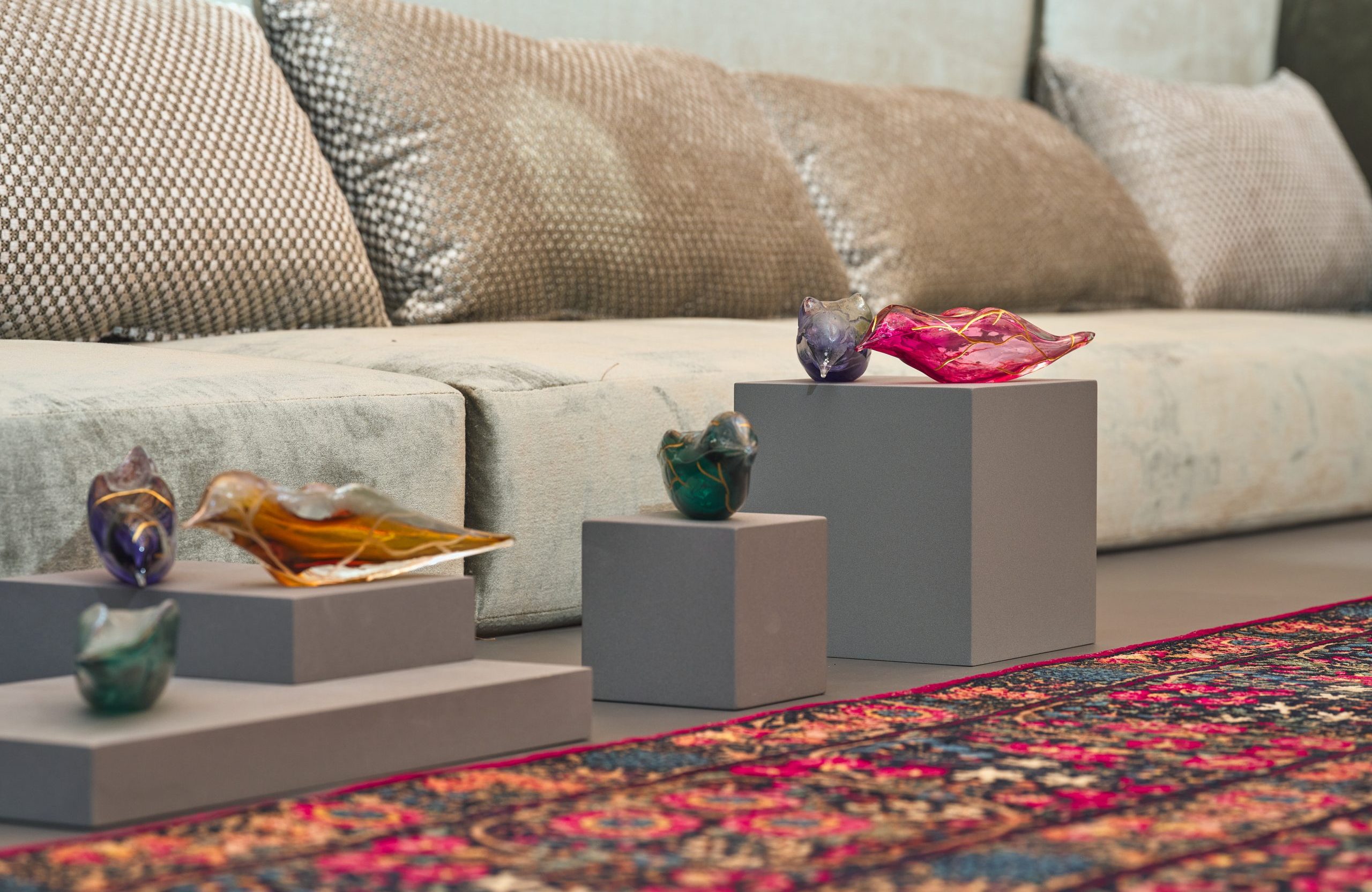All photos by Peter Kovessy
Warship in tow and a new defense cooperation agreement in hand, UK officials are in Qatar this week, lobbying hard to sell more weapons to the Gulf state.
Last week, the two countries signed a new 10-year pact that will lead to more training, joint exercises, high-level visits and, the UK hopes, additional military sales.
“Qatar is one of our most important regional partners,” British Defense Secretary Michael Fallon said during a press conference yesterday. “We already carry out around four exercises a year. We will do more.”

Fallon was speaking inside a hangar aboard the HMS Defender, a 152m destroyer docked in the Doha Port alongside more than a half-dozen other warships that are in town for this week’s Doha International Maritime Defence Exhibition & Conference (DIMDEX).
Typhoon pitch
The event comes as the UK is increasing its military presence and building new permanent bases in the region.
“The security of the Gulf is (also the UK’s) security,” Fallon said.
For the British, the defense trade show and tour of HMS Defender was a show of force and an opportunity to showcase some of the latest UK military hardware.

Fallon said one of the purposes of his visit was to “emphasize the attractiveness” of the British-made Typhoon fighter jet to the Qatar military. The planes reportedly have a list price of US$140 million each, meaning sale agreements typically run into the billions of dollars.
His sales pitch comes as Qatar finalized its €6.7 billion (QR27.6 billion) purchase of 24 Rafale fighter jets, manufacturer by French firm Dassault Aviation.
Fallon said the Rafale purchase would not preempt Qatar from buying additional fighter jets.
He added that a deal to sell Typhoons to officials here is “definitely still on the table” and was discussed when he met Khalid bin Mohammad Al Attiyah, Qatar’s minister of state for defense affairs, last week.
Although Qatar is trimming government spending in many areas, some analysts have said its military budgets and that of other GCC states have remained unaffected.
Aboard the HMS Defender
Commissioned in 2012, the HMS Defender is built to “control” airspace the size of Portugal with its sensors and anti-aircraft missiles.
Locally, this means the ship can keep an eye out for any airborne threats to the American planes departing from and returning to the Al Udeid Air Base in Qatar.

The ship currently has approximately 240 crew members, some of whom ran through a simulation for visitors yesterday.
The demonstration showed how they can quickly identify hostile aircraft, issue warnings and rapidly ready an arsenal that includes missiles and a 20mm Gatling gun that fires up to 3,000 rounds a minute.
“This ship, which is patrolling in the Gulf, is a powerful demonstration of the power of our Royal Navy,” Fallon said.
Last November, the UK committed itself to maintaining a permanent military presence in the Gulf as part of its defense and security review. Earlier that month, the UK started construction on a new naval base in Bahrain.
Task force
There are several multinational naval forces operating in and around the Gulf. The military vessels frequently board and inspect ships in the region in an attempt to intercept the smuggling of weapons, drugs and people.
Just outside the Gulf, the UK will take over the rotating leadership of a 31-country maritime task force next month.
That particular group is formally known as Combined Task Force 150 and is made up of roughly a half-dozen ships patrolling some 2 million square miles, covering the Red Sea, Gulf of Aden, Indian Ocean and Gulf of Oman.

Earlier this week, the task force announced a French vessel in the North Indian Ocean had intercepted a dhow headed to Somalia carrying several hundred AK-47 assault rifles, machine guns and anti-tank weapons.
Thoughts?

